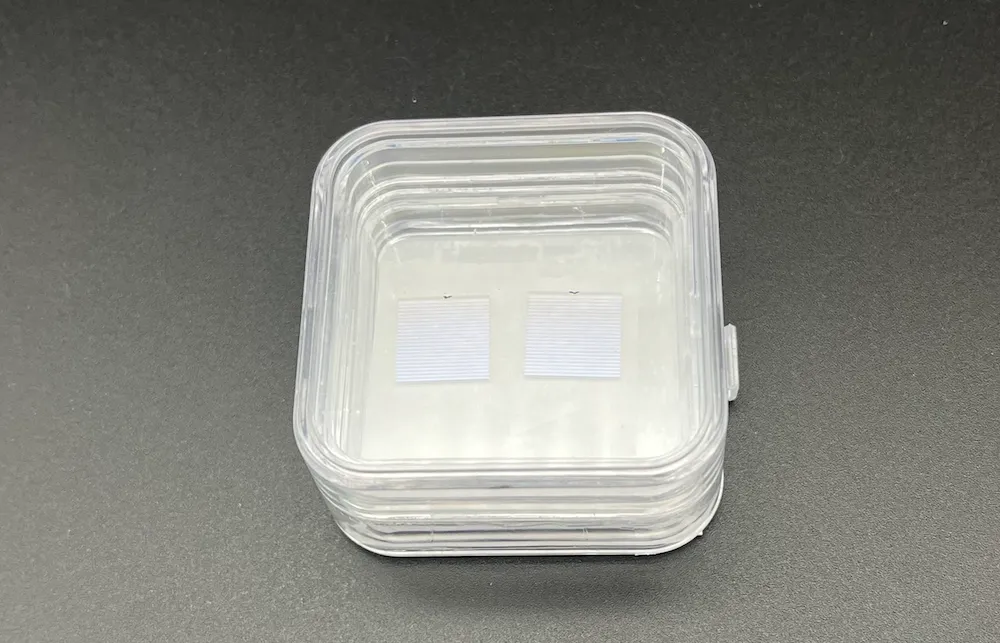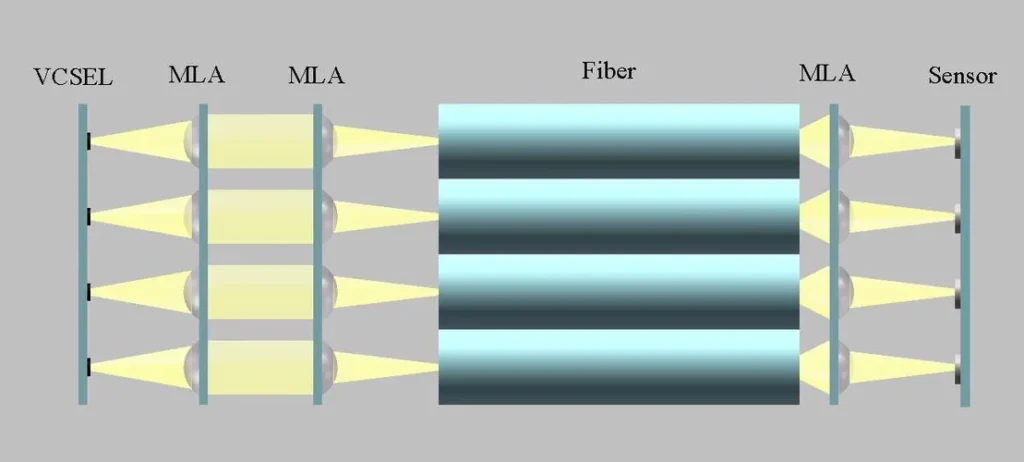Introduction
As a company leader, product manager, designer, or engineer, you’re likely familiar with the constant drive to improve optical systems, whether it’s for imaging, sensing, or communication. One technology that’s becoming increasingly vital in these fields is the microlens array. Let me share some insights into why these tiny, yet powerful components are essential and how they can meet your specific needs.
Microlens arrays, comprising one- or two-dimensional assemblies of small lenses (lenslets), are essential in various optical applications. These arrays typically form periodic patterns, either square or hexagonal, with lens pitches ranging from a few micrometers to several hundred micrometers. Chineselens Optics specializes in designing and producing cost-effective, high-quality custom microlens arrays tailored to specific customer requirements, leveraging over 10 years of industry experience and ISO 9001:2015 certification.

Structural Characteristics of Microlens Arrays
Microlens arrays are generally square, such as 10 mm × 10 mm, but rectangular or circular shapes are also common. The number of microlenses can vary from thousands to millions, depending on the application. These arrays are available as standalone optical components, often mounted within metal or polymer frames to fit standard optical mounts. They typically feature anti-reflection coatings on both surfaces. Some arrays are fabricated as thin, transparent structured layers attached to flat, homogeneous glass or semiconductor substrates.
Additionally, microlens arrays can be integral parts of larger assemblies. For instance, CCD and CMOS image sensors often incorporate one microlens per photodetector to enhance light collection efficiency by directing all incident light to the active areas of the chip.
Key Parameters
Microlens arrays vary based on several critical parameters:
- Lens Shape: Most arrays consist of circular lenses, although cylindrical lenses are also used. Some lenses focus in both directions while maintaining a square geometric shape.
- Spectral Range: Arrays are optimized for specific spectral ranges, such as visible light or near-infrared, influencing the choice of optical material and anti-reflection coatings.
- Lens Pitch: Available in values from a few micrometers to hundreds of micrometers, with high positional accuracy required for certain applications.
- Fill Factor: A high fill factor, the ratio of usable lens aperture area to total array area, is often desirable. For example, a square array of circular lenses without spacing would have a fill factor of approximately 78.5%, whereas hexagonal arrays can achieve higher fill factors.
- Lens Characteristics: Each lens’s diameter and focal length are crucial, with homogeneity of focal length across the device and minimal optical aberrations being important for imaging applications. Aspheric lenses are sometimes used to reduce aberrations.
- Light Throughput: Limited by the fill factor and potential non-perfect transmissivity due to parasitic absorption or reflection

Customization and Fabrication Capabilities
Microlens arrays are typically produced through micro-fabrication methods that form all microlenses in a single step. Photolithography, using grayscale or binary masks, is a common technique, often incorporating semiconductor processing technologies known as wafer-level optics. Mechanical methods such as molding, especially with epoxy materials, are prevalent in plastic optics.
Surface tension phenomena can also create smooth, repeatable lens surfaces, though these are usually non-spherical and may not be ideal regarding optical aberrations. Laser material processing is another method, offering versatility and flexibility by forming one lenslet at a time or several simultaneously, though this process tends to be slower and more expensive.
Various optical materials, including fused silica, other glasses, and plastics (polymers), are used in manufacturing, with the choice depending on the production technique and desired device properties, such as spectral range and mechanical stability.
Over the years, my team and I have worked with numerous companies to customize microlens arrays tailored to their unique applications. Whether you’re dealing with laser homogenization, wavefront sensing, or high-sensitivity imaging, the ability to customize these arrays to specific wavelengths and optical requirements can make a significant difference in performance.
We understand the pressures of tight deadlines and the need for precision. That’s why our process is designed to deliver customized microlens arrays within a month. We’ve perfected techniques like photolithography, reactive ion etching, and molding to produce arrays that meet stringent optical standards, whether you need stepped microlenses or continuous surface types.
Applications of Microlens Arrays

Microlens arrays are employed in numerous modern optical and optical product applications:
- Collimation: Linear cylindrical lens arrays can collimate radiation from diode bars (diode arrays) in the fast axis direction. Similarly, 2D spherical lens arrays can collimate output from VCSEL arrays.
- Shack-Hartmann Wavefront Sensors: Microlens arrays are integral to these sensors, used to probe wavefront orientation across a laser beam cross-section, widely applied in adaptive optics.
- Beam Homogenizers: Certain optical diffusers use microlens arrays for beam homogenization.
- Image Sensors: CCD and CMOS image sensors often incorporate microlenses to enhance light collection efficiency, where optical aberrations are not a concern.
- Imaging Devices: Microlenses are used in photocopiers, smartphone cameras, and lightfield cameras.
- Interferometry: Lens arrays generate reference beams for the interferometric characterization of large lenses.
- Fiber Arrays: In coherent beam combining, microlens arrays help collimate output from fiber arrays.
Comprehensive Overview of Custom Solutions
Chineselens Optics excels in producing high-performance, custom microlens arrays tailored to meet the specific needs of customers. Here’s a detailed look at their capabilities:
Cost-Effective Solutions: Chineselens Optics’ replication process is economically scalable, accommodating production quantities from 100 individual components to 10,000 wafers annually. This ensures high-quality microlens arrays are available at competitive prices.
Diverse Lenslet Materials: The company offers proprietary replication materials with refractive indices ranging from 1.52 to 1.68, ensuring compatibility with a wide range of optical applications.
Reflow Compatibility: Chineselens Optics’ microlens arrays are suitable for assemblies requiring solder reflow, enhancing their versatility in various manufacturing processes.
Manufacturing Excellence: Chineselens Optics is committed to high-quality production, holding ISO 9001:2015 certification and manufacturing all optical components and assemblies in China, ensuring repeatable performance and reliability.
In Summary
By combining innovative manufacturing techniques, diverse material options, and a commitment to quality, Chineselens Optics stands out as a leading provider in the microlens array market. Dedicated to delivering high-performance, custom microlens arrays, Chineselens Optics meets the rigorous demands of modern optical systems. For more details, visit Chineselens Optics.

